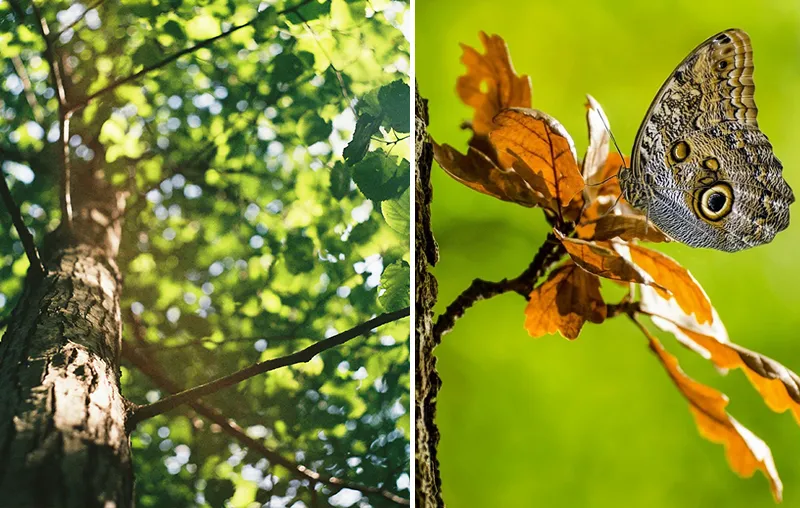Are you looking for scientific statistics on insect mortality? Then you've come to the right place! Insects play a central role in the ecosystem and for the biodiversity on earth. Among other things, they are the most important plant pollinators and thus make a decisive contribution to our food security.
But wild bees, butterflies, beetles, grasshoppers, ants, flies, dragonflies and many other insect species are under massive threat. The climate changeincreasing land sealing, gravel gardens and, above all, intensive agriculture are considered to be the main causes.
Unfortunately, insect mortality is relatively difficult to grasp. To get a picture of the state of the insect world and to better understand the urgency of countermeasures, we need to look at scientific facts, figures and data.
In this article, I would therefore like to provide you with the most important statistics about insects, their decline and their significance for our society. Above all, use them to motivate yourself and other people to be more environmentally conscious in their everyday lives and to have a more insect-friendly garden. Let's go!
Here is already a short overview for you:
My please: Share this article if you want to use statistics and facts from it. You can use the web address of this page or the following reference. Thank you for your support!
https://www.careelite.de/insektensterben-statistiken
Citation: C. Schulz; CareElite.de (2024): Insektensterben Statistiken - Die wichtigsten Zahlen und Fakten über Insekten und ihre Rückgang, available at https://www.careelite.de/insektensterben-statistiken
General facts: How many insect species are there?

Insects are fascinating and ecologically extremely important creatures that in great variety and number occur. Here I would first like to introduce you to some general data from the insect world that you may not yet know.
You may even be surprised of how many different insects there actually are in the world:
- Over 33,000 insect species are found in Germany. They make up around 70 percent of all animal species living here. (BMUV)
- Around one million insect species have been scientifically proven worldwide. (Statista)
- With around 387,000 species, beetles form by far the largest global insect order. Followed by butterflies (157,000 species), dipterans (155,000 species; including mosquitoes and flies) and hymenopterans (117,000 species; including bees and ants). (Statista)
- For over 400 million years there are already insects on earth. (idw)
Statistics on decline: What is the extent of insect extinction in figures?
The scientific figures on the decline in insect populations are alarming and highlight the urgency of taking action to combat insect mortality and its causes.
Here you can find out the most important facts, how the insects are currently doing:
- Over 29 percent of all insect species in Germany are classified as "Threatened with extinction", "Critically endangered", "Endangered" or with "Endangerment of unknown extent". (Red List Center)
- About 41 percent of all insect species worldwide are threatened with extinction. (BOELL)
- By 2.5 percent the biomass from insects decreases approximately every year. (BOELL)
- About 0.92 percent of all insect species disappear each year. (van Klink, Bowler, Gongalsky)
- By 76 percent the biomass of all flying insects on Earth declined in the 27 years from 1990 to 2011 alone. (Hallmann, Sorg, Jongejans et al.)
- Around 53 percent of all butterfly species49 percent of all beetle and grasshopper species, 46 percent of all Hymenoptera and 37 percent of all dragonflies are globally threatened with extinction. (Statista)
- With a total share of around 46 percent intensive agriculture with chemical pesticides and fertilizers is one of the main causes of insect mortality. Other reasons are urbanization, deforestation and climate change. (Sánchez-Bayo, Wyckhuys)
Statistics on insect dependency: Why are insects so important to us humans?
Even if the little buzzing animals meant nothing to us, for us humans there is one thing above all else Reason to protect insects such as butterflies and wild bees: their Pollination performance.
In order to The importance of insects and the serious consequences of insect extinction for our own lives, I have also compiled a few effective facts and figures for you:
- Up to 5,000 flowers can pollinate a single wild bee per day. (Badische Zeitung)
- 3.8 billion euros is the approximate economic value of insect pollination. From a global perspective, the value is around 1 trillion euros. (Lippert, Feuerbacher, Narjes et al.)
- Over 84 percent of crop species in Germany are dependent on insects. (CORDIS)
- Around 85 percent of agricultural yields in plant and fruit cultivation in Germany depend on the pollination performance of insects. (BMEL)
Use and share insect mortality statistics!

I think we can all agree that the statistics on insect mortality are worrying and underline this, how urgently we need to act. As the decline in insects is man-made, we must all do our bit together to counteract the decline in insects. No one else will do it.
"Any stupid boy can crush a beetle. But all the professors in the world can't make one."
Arthur Schopenhauer (more at Environmental protection quotes)
The No use of pesticides in the garden and fields, the Creation of insect-friendly gardens or the Creating new habitats are, for example, effective Measures against insect mortality that everyone can implement.
Finally, I would like to give you here some further articles from the blog, with which you can also do the insects a big favor or two:
- Climate-friendly living - tips & tricks
- Designing a sustainable garden - the best tips
- Creating a cairn for insects - how to do it
- Bee-friendly roses for the garden
Do you have any questions, tips, suggestions or other statistics about insect mortality? Then I look forward to your comment! Thank you once again for sharing the link to this collection of statistics with other people.
Stay insect-friendly,

PS: I have also written an extensive article about the bee friendly garden written. Use the tips to create new habitats, especially for the many endangered wild bee species.






